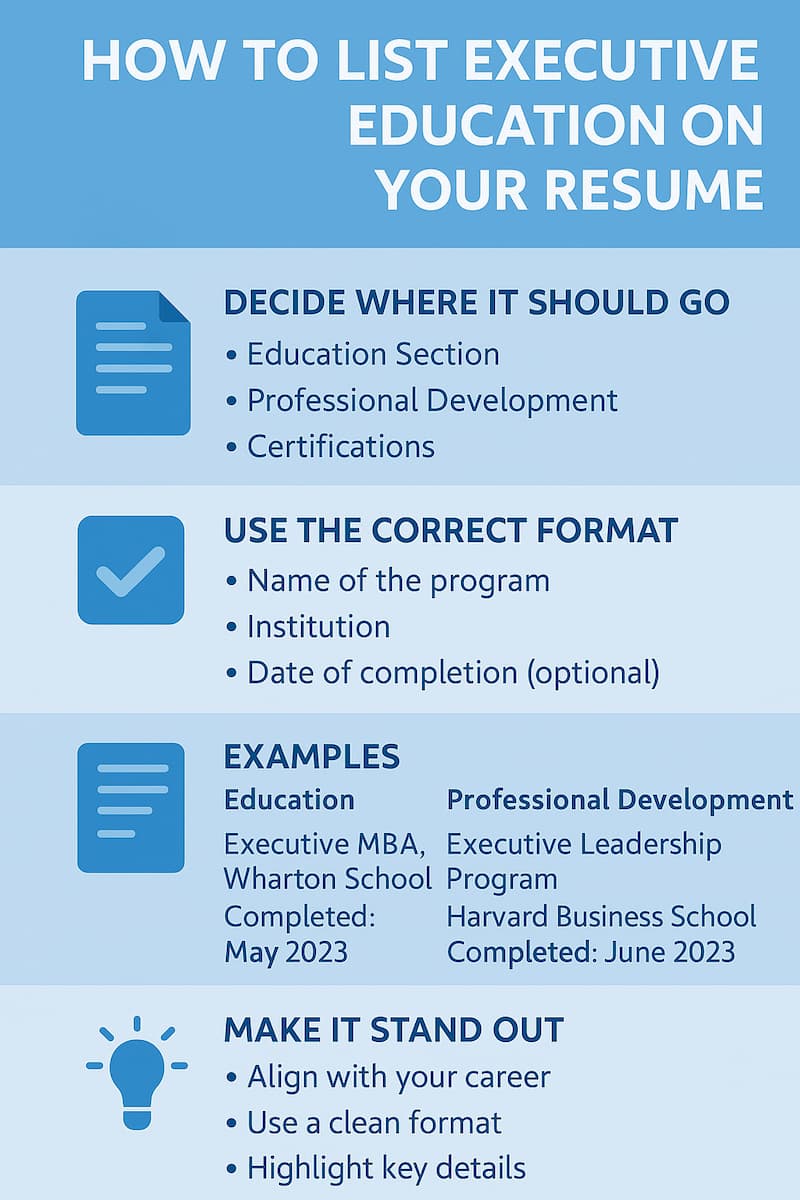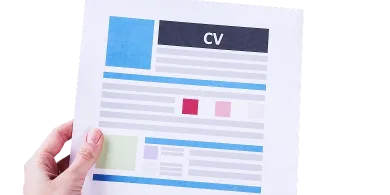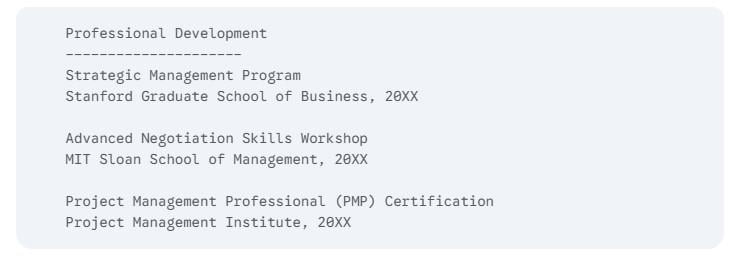Table of contents

You’ve put in the time, effort, and resources to complete your executive education program. Now, you’re searching for a good-paying job, and some nagging questions are on your mind.
How do you display your executive education on your resume in a way that will grab the recruiter’s attention? Do you create a separate section for it or list it under education? How much detail should you include?
The good news is there’s a right way to do it, and we’re here to help you with your C-level resume, you can simply hire our executive CV writers to assist you. While in this guide, we’ll break down where to place your executive education, how to format it, and what details you should include.

In our experience, where you place your executive education on your resume will influence how the recruiter will perceive it. The rule of thumb is to position it strategically based on the program type and how important it is to your career.
Here are the places you can list your executive education:
However, if your executive education is highly relevant to the role you’re applying for, list it near your resume. When you do this, it will grab the recruiter’s attention quickly.
Review your resume to display your executive education where it will shine.

Knowing where to list your executive education on your resume is insufficient. You should also know how to format it. Here’s why: 68% of hiring managers say they turned down a candidate because of poorly structured resumes. What does this mean for you?
Even if you have the most impressive credentials, they can look ordinary if your resume is cluttered or has inconsistent formatting. When that happens, it’s most likely that your executive education will not get noticed by the recruiter.
We recommend this format if you don’t know how to structure your executive education on your resume:
According to a 2018 study, you must keep the details concise when scanning resumes.
Tweak the format of your executive education section today to make it more impactful.
Here are some examples of how to list your executive education program on the different parts of your resume.
Executive MBA, Wharton School, University of Pennsylvania
Do you see how it aligns with your formal education? Even better, it appears to be a further academic qualification.

Professional Development
Doing it this way separates it from your formal education but highlights its value.

Certifications

Summary:
“I’m a business executive with 10+ years of experience leading strategic initiatives. I completed the Executive Leadership Program at Harvard Business School and gained expertise in organizational change and executive decision-making.”
Use these examples to make adjustments to your resume today.

Or check our hospital director resume example as an inspiration for your executive resume writing.
According to Hanne Keiling, education is one of the few key sections recruiters search for on your resume. In other words, you have to make it count.
Here are some tips to help you use your executive education to your advantage:
You need to know that not all executive education programs carry the same weight across all industries. So, you have to know what programs are valued most in what industries. Here are some recommendations for you:
Your executive education is a powerful asset for your resume, but only if you display it correctly. In a nutshell, position it strategically, format it clearly, and make it stand out. Please use these tips to update your resume today and make recruiters see what separates you.